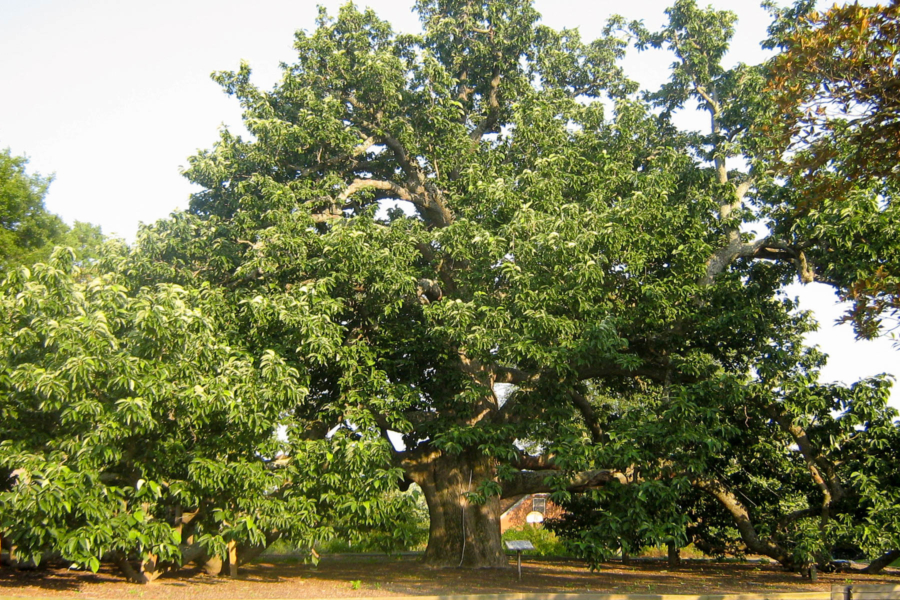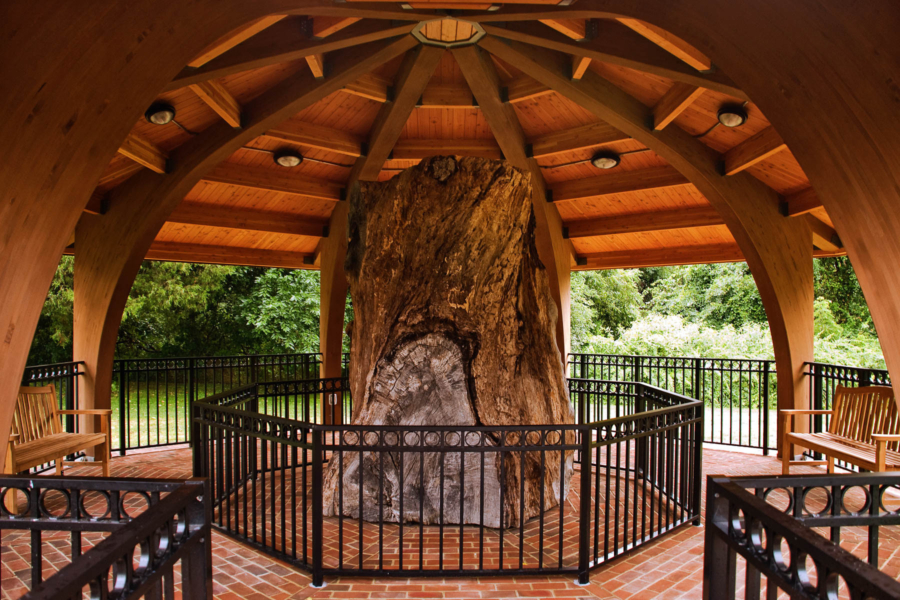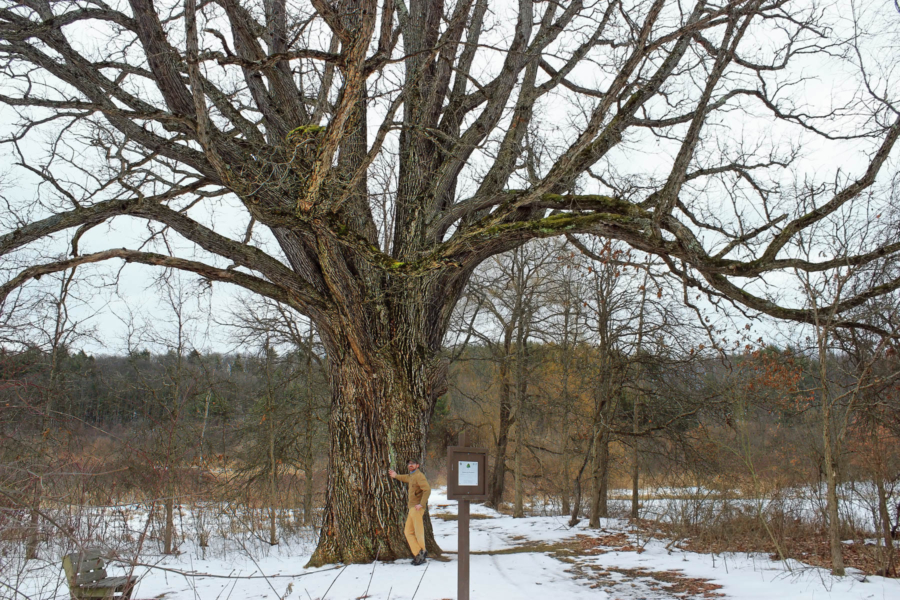What it takes to become a champion tree in the Chesapeake Bay region
Recognizing “big trees” raises awareness of their benefits

In 1940, the then-65-year-old American Forestry Association (now American Forests) decided to hold a competition to find some of the largest trees across the United States. The intention of this contest was to spark public interest in what was happening in the forests around them and to establish a “living, nation-wide laboratory” for the study of forestry and trees. It had only been about 20 years since the rate of deforestation across the country had begun to slow, after more than two-thirds of American forests had been cleared for timber production and agricultural activities.
It is quite possible that the American Forestry Association came up with the idea for this contest thanks to the state of Maryland, who had begun keeping their own registry of big trees in 1925. Now, most states across the country have their own registries, and American Forests recognizes Champion Trees in 41 states.
To become part of the National Champion Tree Program, nominated specimens must meet certain criteria that differ from some of the state registries’ requirements. The trees must be the largest of their species based on three measurements—their height, circumference and average crown (the spread of the branches and leaves of a tree). Measurements must be updated every 10 years to remain on the list.
Champion trees across the watershed
Delaware
Delaware has one tree on the National Champion Tree Registry, a poison sumac, but it lies just outside the Chesapeake region in New Castle County Park. The state does, however, have its own Big Tree Registry, run through the Delaware Forest Service. Delaware is home to 140 different tree species, of which 80 are native, 35 are non-native and 25 are invasive. To join Delaware’s Big Tree Registry, the state uses the same measurements as American Forests, but is deferential to those species with a single, central stem that is capable of reaching up to 30 feet high. To see some of Delaware’s largest trees in the Chesapeake Bay watershed, head to the town of Greenville, which is home to a 94-foot-tall Zelkova (non-native) and a 122-foot-tall sycamore.
District of Columbia
Washington, D.C. does not yet have its own registry, but a chestnut oak was nominated in 2012 and added to the national registry. Located in Battery Kemble Park in northwest D.C., the tree’s circumference measures an impressive 291 inches, with a height of 105 feet. It’s unclear how old the tree is, but there is speculation that it was cut down during the Civil War and then re-sprouted from its cut stump. A local nonprofit, Casey Trees, maintains its own registry of large trees within the District.
Maryland
Maryland is home to 16 trees on the Champion Tree Registry, of which the largest is an American elm found in Baltimore County. The state’s own program includes both native and naturalized trees—meaning they can grow and reproduce on their own—as well as invasive species. The registry does not include non-native species that are planted as part of a landscape. They follow similar measurements as American Forests, but require the tree to be the champion of its county, as well. Currently, the largest tree in Maryland is a sycamore found in Dickerson Conservation Park in Montgomery County. The state also maintains a list of Legacy Trees, honoring those champion trees that have since died. The Wye Oak in Wye Mills tops that list, believed to have lived on the Eastern Shore since the 1500s until it was felled by a severe thunderstorm in 2002. When it fell, the tree measured almost 32 feet tall and weighed over 61,000 pounds.

New York
New York has six trees on the Champion Tree Registry, the largest of which is a Black locust, but all fall outside of the Chesapeake watershed. The state does have its own Big Tree Registry, which follows the same criteria as American Forests. Several of New York’s biggest trees do fall within the Bay region, including a sweet Black birch in Cortland County, a Northern Catalpa and a red pine in Oneida County, and a chinkapin oak and sugar maple in Onondaga County. The circumference of the sugar maple’s trunk alone measures 237 inches and the chinkapin oak rises to 105 feet tall.
Pennsylvania
One of the three trees that Pennsylvania has on the Champion Tree Registry falls within the Chesapeake watershed, a balsam fir in Adams County. The crown of the tree spreads 53 feet around its trunk, which has a circumference of 160 inches. The Pennsylvania Forestry Association maintains their Big Tree Registry, which has been documenting the champions of the Commonwealth for over 50 years. The biggest tree falling within the Bay region on the Pennsylvania registry is an Eastern cottonwood in Dauphin County. Located in a resident’s backyard, the tree reaches 107 feet with a crown spreading an amazing 94 feet over a trunk that spans 367 inches.

Virginia
Maryland may have one of the oldest champion tree registries in the country, but its neighbor to the south holds the title of having the most trees in the entire United States on the Champion Tree Registry with a whopping 96. The largest of these is a water tupelo found in Greensville, with a trunk circumference of 463 inches. While impressive, this tree falls second on the Commonwealth’s Big Tree Registry to a bald cypress found in Southampton. The bald cypress lies in the Nottoway River, and during a period of drought in 2016 when water levels in the river were lower than normal, it was discovered that the tree’s trunk was actually larger than previously thought, measuring an incredible 520 inches.
West Virginia
West Virginia’s portion of the Bay watershed is home to the country’s largest pin cherry, one of three of the state’s entries on the Champion Tree Registry. West Virginia’s Department of Forestry maintains the state’s Big Tree Program. Several of West Virginia’s champion trees fall within Jefferson County, which is part of the Chesapeake region. In addition to an American elm and a sycamore, it also includes a Gingko, silver maple and Yellow-Poplar Tulip tree.
Celebrating these champions reminds us of the many benefits that trees provide. While many states and localities have strict regulations in place that call for the replanting of trees when others are cut down, and planting any tree is beneficial, nothing can take the place of those that have stood for generations.

Comments
There are no comments.
Thank you!
Your comment has been received. Before it can be published, the comment will be reviewed by our team to ensure it adheres with our rules of engagement.
Back to recent stories